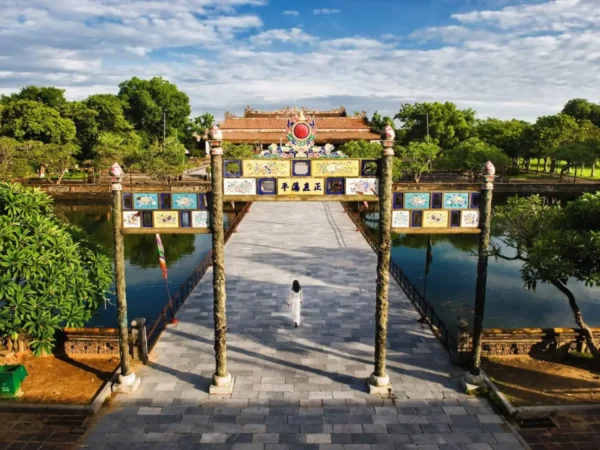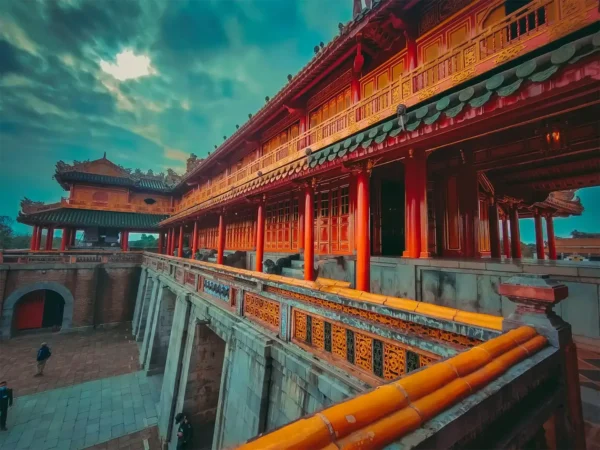Khai Dinh Tomb Showcases Spectacular Serene Architecture
Khai Dinh Tomb is a cool place to see in Vietnam. It is the tomb of a king and looks very different from other tombs. The building is big and full of art. You can find many nice things like stone statues and colorful walls. It is on a hill, so the view is great too. Want to know what makes this place so special? Scroll down below to find out more fun and cool things!
Overview of Khai Dinh Tomb

- Entrance fee: 150,000 VND/adult and 30,000 VND/child
- Opening hours: 7 AM and 5 PM
Khai Dinh Tomb, also called Ung Mausoleum, sits about 10 km outside Hue on Chau Chu Mountain. Built between 1920 and 1931, it’s the smallest but most expensive tomb of the Nguyen emperors. The architecture is a bold blend of Vietnamese and Western styles – mixing Gothic, Roman, Hindu, and Buddhist design elements using modern materials like concrete, steel, porcelain, and glass. Inside, you’ll find grand staircases, finely carved statues, a mosaic-filled palace, and richly decorated royal chambers.
Join our Hue Tour from Da Nang and explore iconic historical sites like Khai Dinh Tomb, Thien Mu Pagoda, and the Imperial City — perfect for history lovers seeking unique check-in spots and a deeper connection to Vietnam’s rich cultural and imperial past.
Khai Dinh Tomb Travel Guide: 6 Amazing Things To Explore
Wondering what to do in Khai Dinh Tomb? Let’s explore the top 6 highlights that make this royal site a must-see in Hue!
1. Dive Into the Fascinating Architecture of Khai Dinh Tomb
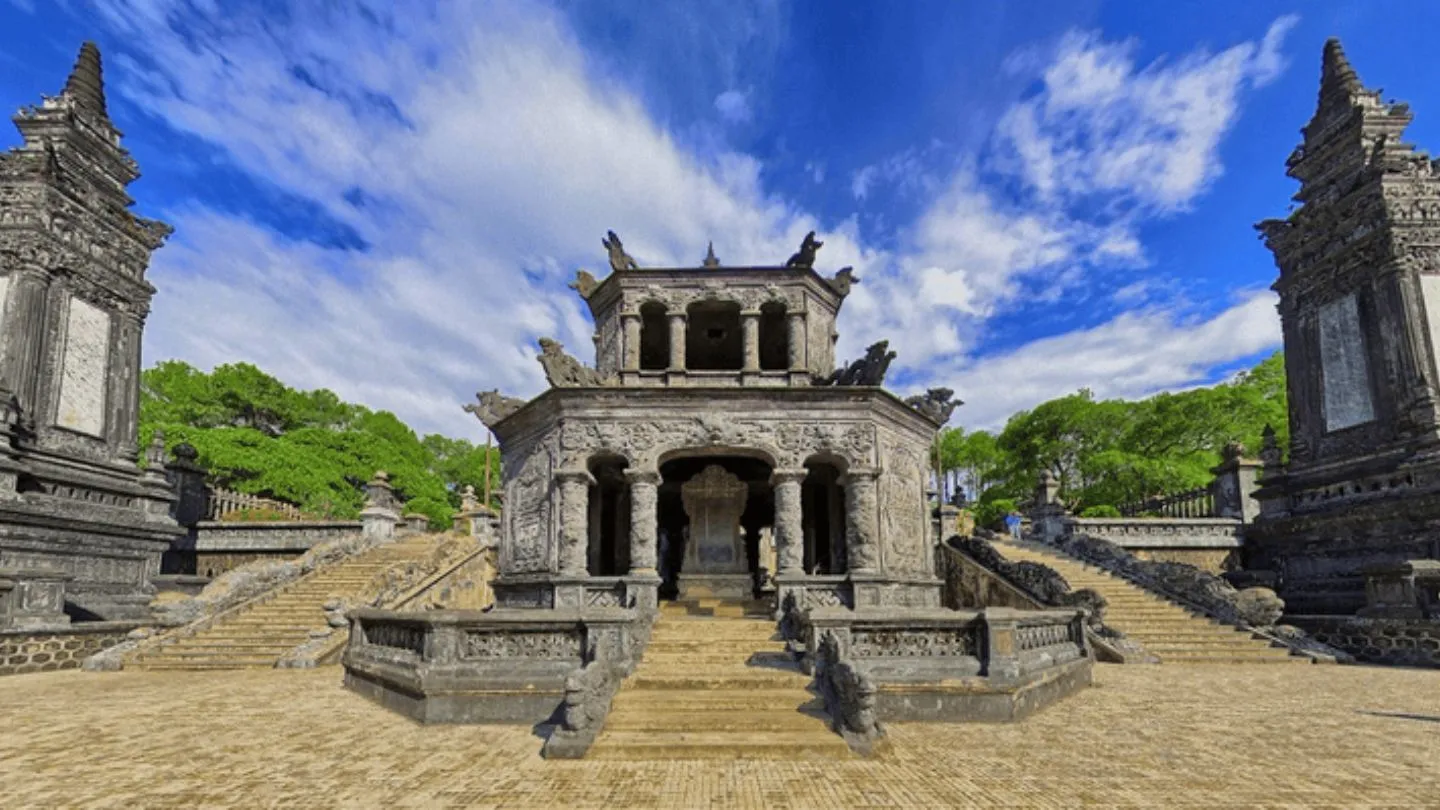
Khai Dinh Tomb isn’t your typical royal tomb. After a trip to France, the emperor brought back European vibes and mixed them with Vietnamese style. The tomb sits on a mountain, built with concrete and iron, giving it a dark, Gothic look. You’ll spot giant dragon carvings, Roman-style arches, and super detailed statues all around. Every corner has a blend of East and West, making this tomb one of the most unique in Hue.
2. Walk Through the Majestic Tam Quan Gate
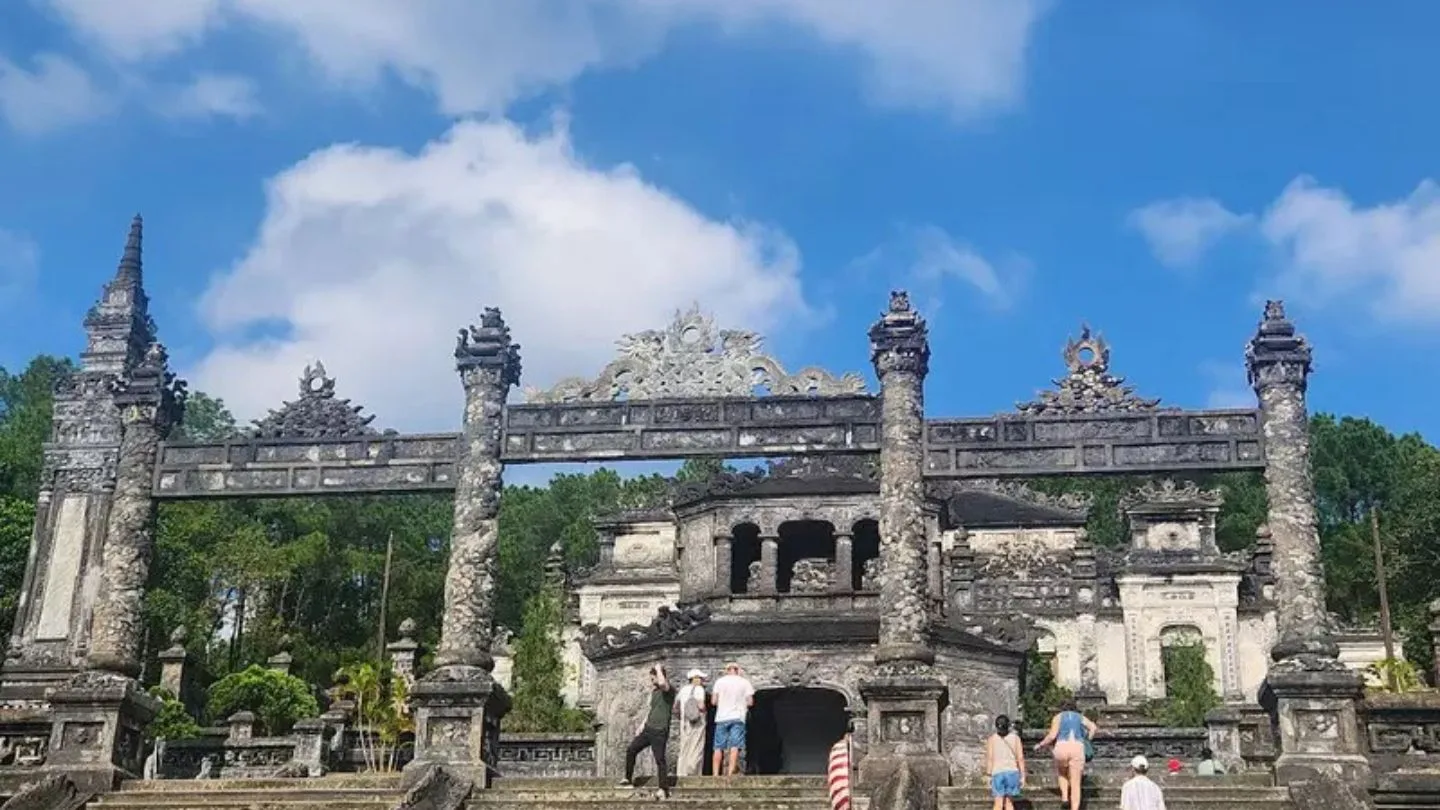
Your journey begins with a bit of a climb – 127 steps in total, but don’t worry, the view (and the photos) are worth it. The first 37 steps take you to Tam Quan Gate, a beautiful example of ancient Vietnamese architecture. But here’s the twist: the gate also has Hindu-style pillars, which show how Vietnamese and Indian cultures blended in this royal design. It’s a cool and unexpected mix that sets the tone for the rest of your visit.
3. Explore the Nghi Mon Area & Bai Dinh Courtyard
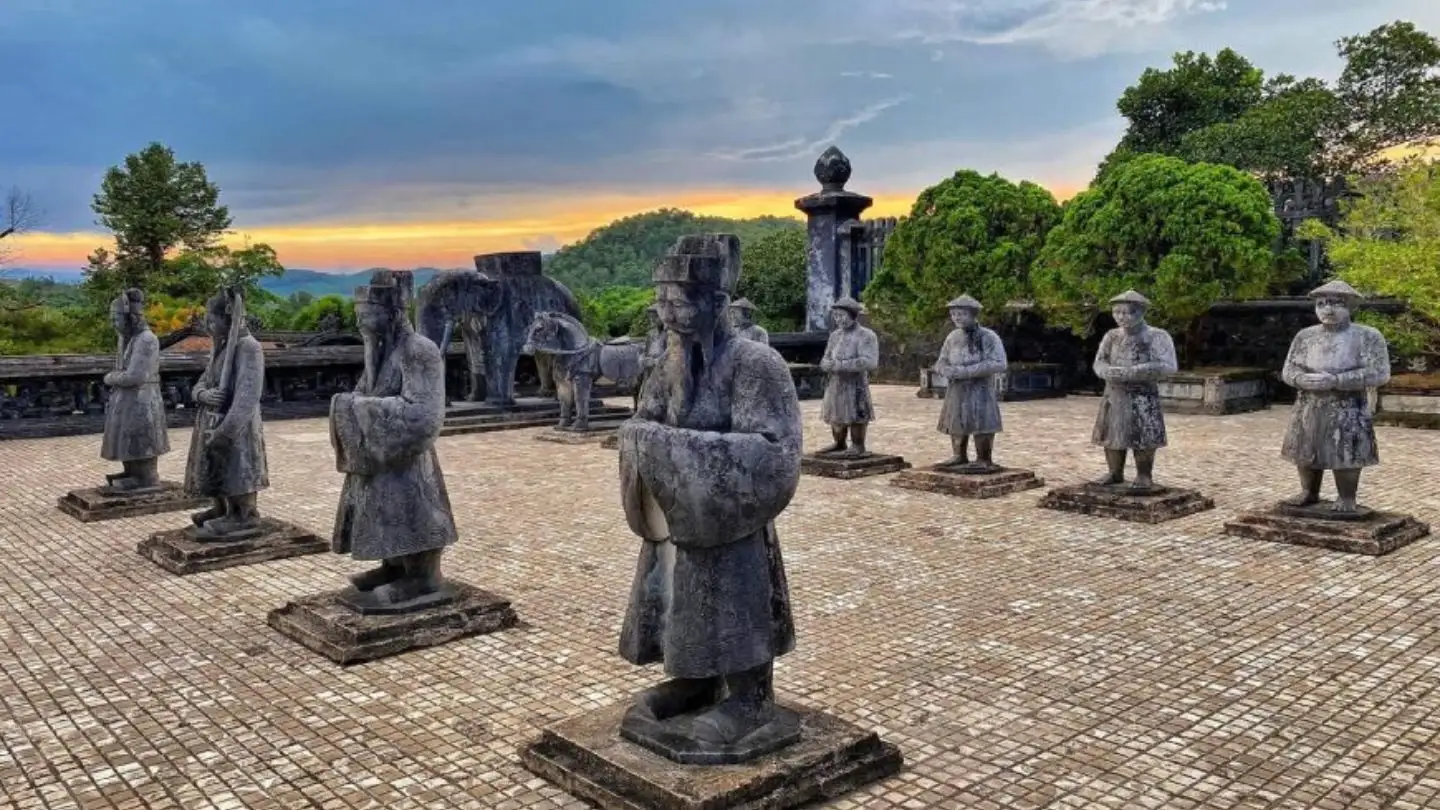
Keep going and you’ll reach the Nghi Mon area and Bai Dinh Yard, where things get really fascinating. You’ll be greeted by life-size stone statues of mandarins, soldiers, elephants, and horses. These weren’t just for decoration – they were meant to serve the king in the afterlife. Each statue has its own expression and fine detail that shows just how skilled the artists were.
In the middle of the courtyard stands a peaceful octagonal gazebo, housing a 10-ton stone stele that honors King Khai Dinh’s life and achievements. It’s both a historic and artistic gem.
4. Climb to the Stunning Thien Dinh Palace
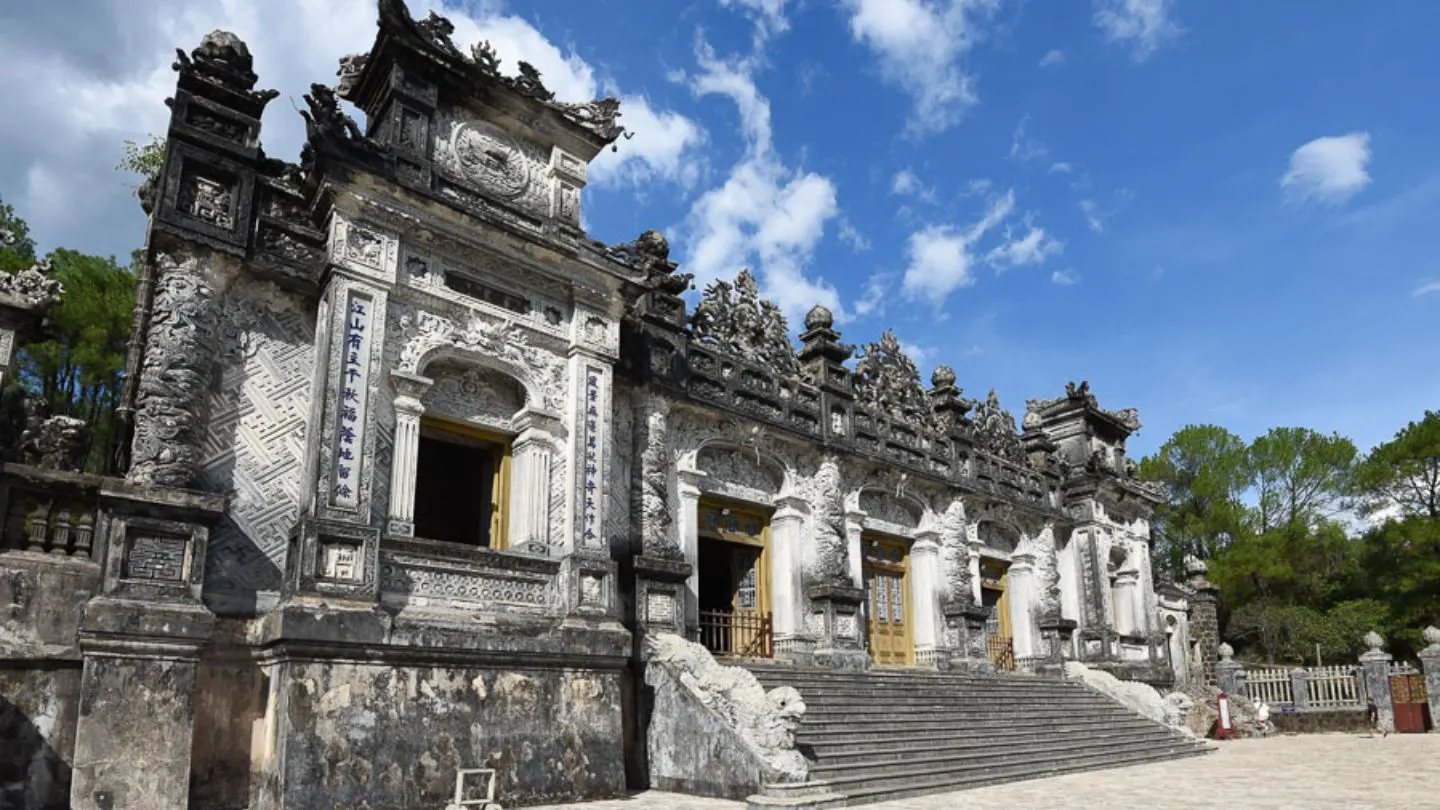
At the top of the hill, you’ll reach the highlight of the tomb: Thien Dinh Palace. This is where the king’s remains rest, and it’s absolutely jaw-dropping. The palace is filled with intricate mosaics made from porcelain and glass – super colorful, super detailed. Right in the center, you’ll find a gold-covered cement dome with a life-size bronze statue of King Khai Dinh sitting beneath it.
But the real surprise? Beneath that statue, 18 meters underground, is the king’s royal crypt – hidden, sacred, and beautifully decorated. This part of the tomb is one of the most unique royal burial sites in Vietnam.
5. Be Amazed by the Beauty of Khai Thanh Hall
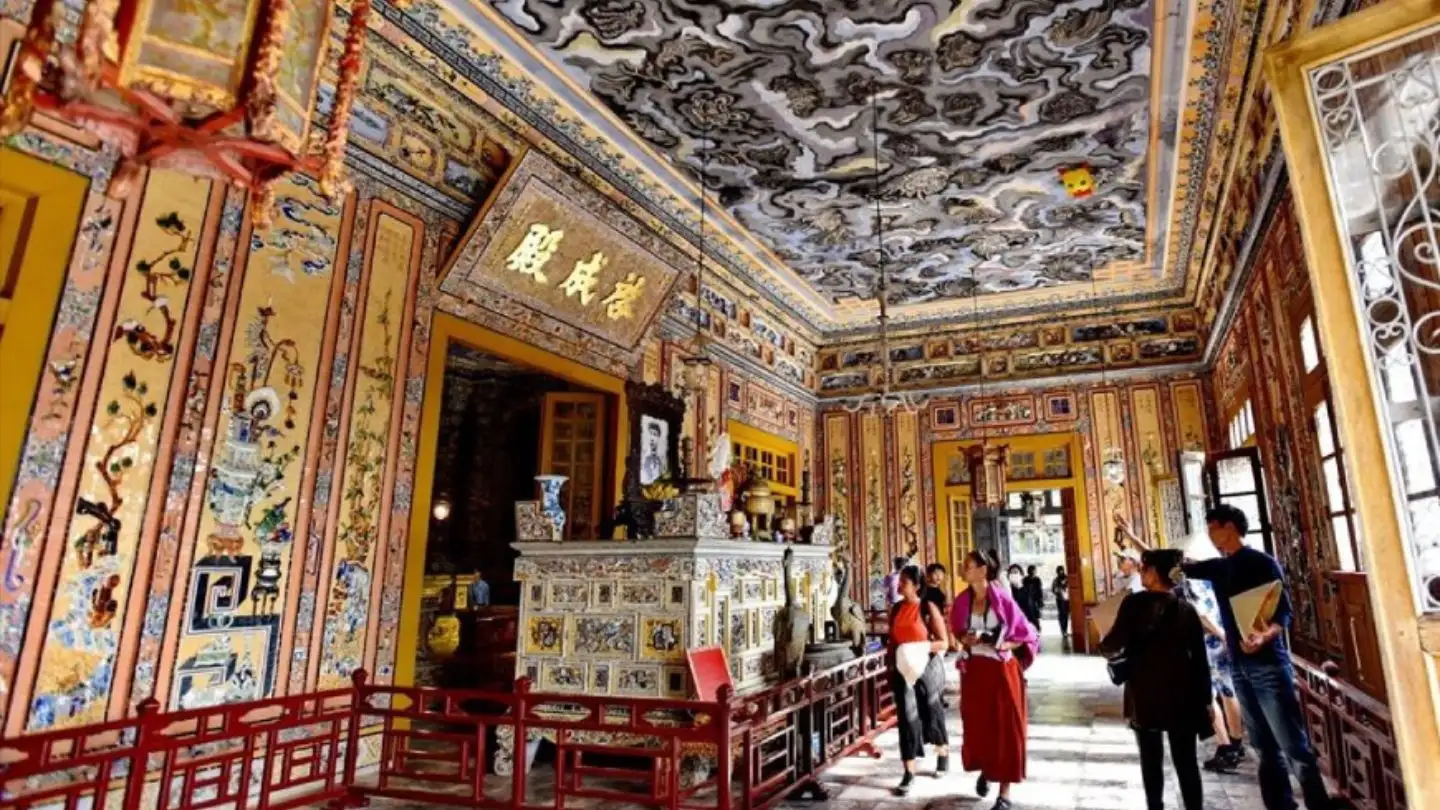
Inside Thien Dinh Palace, you’ll find Khai Thanh Hall, and it’s seriously a feast for the eyes. The hall is decorated with murals of all four seasons on the walls, and the ceiling is hand-painted in a style that’s one-of-a-kind in Vietnam.
This is also where the king’s bronze statue sits on a throne, surrounded by gold-plated details and colorful ceramic patterns. Every inch of this space shows the incredible mix of Eastern tradition and Western influence, and it’s hard not to stand there and just say… “wow.”
6. Admire the Two Bronze Statues of King Khai Dinh
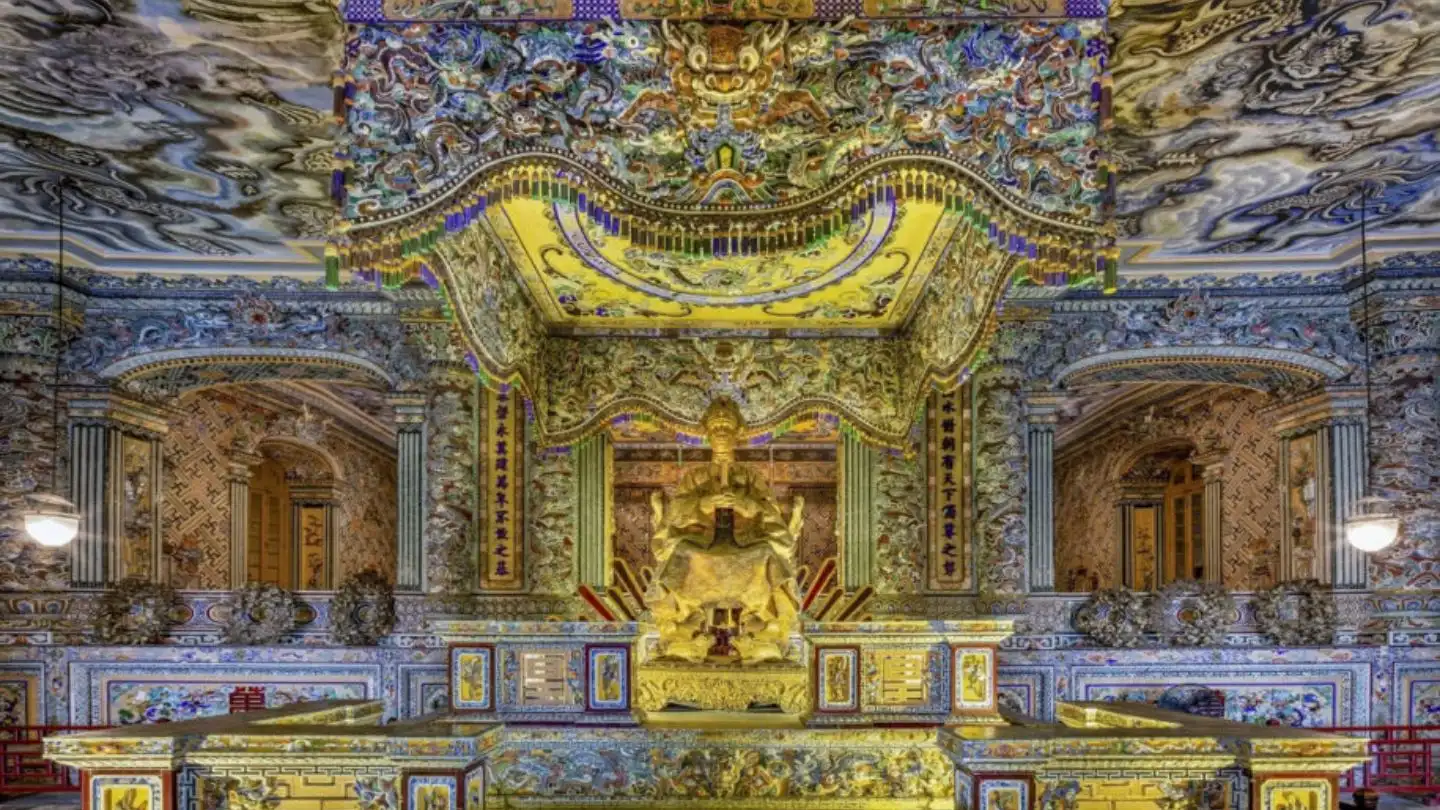
Don’t miss the two bronze statues of the king – one seated on a throne, made in Paris in 1920 and later gilded by local artisans in Hue; the other standing, created by a Quang Nam craftsman. The standing statue was moved here in 1975, and both pieces feel like they bring the king’s presence back to life.
They’re more than just sculptures – they’re pieces of history that show how Vietnamese art evolved by embracing outside influences while staying true to its roots.
A Few Friendly Tips to Enjoy Your Visit to Khai Dinh Tomb
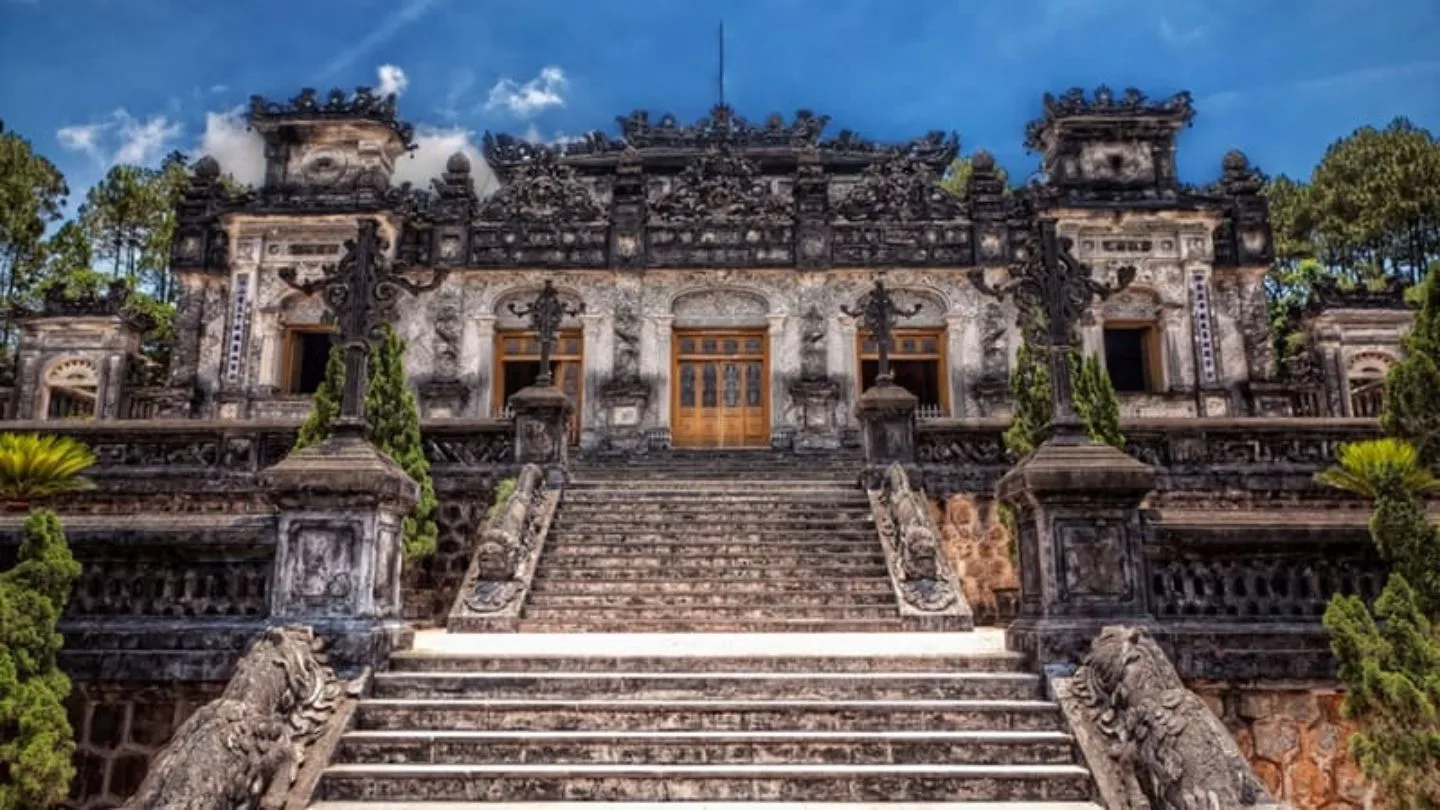
- Wear comfy shoes: There are lots of stairs and walking, so your feet will thank you later.
- Bring a bottle of water: It can get hot, and staying hydrated will help you enjoy more.
- Try to go early: The morning is cooler and not too crowded – great for photos and peaceful vibes.
- Take your time to look around: Every little detail has a story. Don’t rush – enjoy the beauty.
- Be respectful and quiet: It’s a royal tomb, so a calm and polite attitude is always nice.
- Don’t forget your phone or camera: The place is full of amazing spots for photos. You’ll want to capture it all!
Conclusion
Khai Dinh Tomb is a special and beautiful place you should not miss when you visit Hue. Every wall, stair, and picture has its own story. This is not just a tomb – it is also a work of art. When you see it, you will remember it for a long time. We hope this post helps you learn more about this place. Come and see it for yourself – you will really enjoy it!


